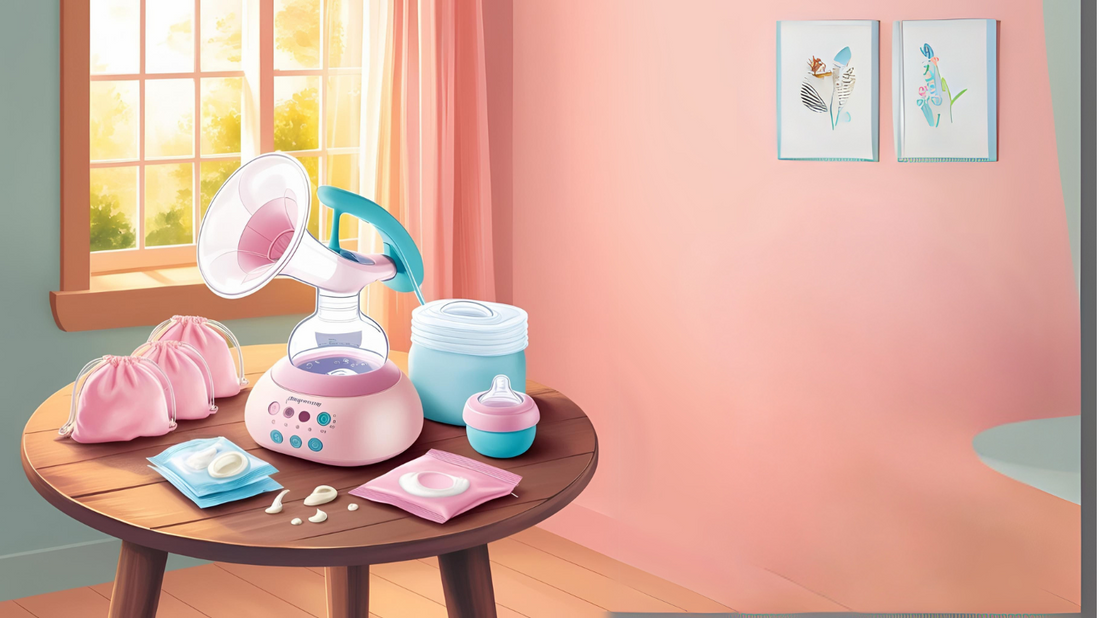
The Ultimate Guide to Storing Breastmilk: Tips for Safety, Hygiene, and Zero Waste
Share
Breastmilk is liquid gold for your baby, packed with nutrients, antibodies, and hormones tailored to their needs. But to ensure it stays fresh and safe, proper storage is key. Whether you’re a new parent or a seasoned pro, this guide will walk you through everything you need to know about storing breastmilk effectively—plus tips to avoid waste!
Why Proper Storage Matters
Breastmilk is a living substance that can spoil if not stored correctly. By following best practices, you can preserve its nutritional value and ensure your baby gets the most out of every drop.
Labelling Your Milk: A Must-Do!
Always label your milk with the date and time of expression. This helps you use the oldest milk first and avoid waste. But there’s more to labelling than just dates:
-
Sick Baby Milk: If your baby is unwell, label this milk separately. It’s high in antibodies and can be a powerful tool to support their recovery.
-
Morning vs. Night Milk:
-
Morning Milk: Higher in cortisol, which helps boost energy and alertness.
-
Night Milk: Richer in melatonin, promoting sleep and relaxation.
Don’t mix these up—timing matters for your baby’s routine!
-
Best Containers for Storage
Choose safe, effective storage options to keep your milk fresh:
-
BPA-Free Bottles: Ideal for short-term fridge storage.
-
Breastmilk Storage Bags: Perfect for freezing and saving space.
Always leave a little room at the top of containers or bags to allow for expansion during freezing.
Thawing and Warming Tips
Thawing breastmilk safely is just as important as storing it:
-
Thaw in the Fridge Overnight: This is the safest method.
-
Use Cool Running Water: For quicker thawing, place the container under cool water.
-
Never Microwave: Microwaving can create hot spots and destroy nutrients.
Gently swirl the milk to mix the fat layers before feeding—never shake!
Hygiene is Key
Good hygiene ensures your milk stays safe for your baby:
-
Wash Your Hands: Always clean your hands before expressing or handling milk.
-
Clean Equipment Thoroughly: Sterilize pumps, bottles, and storage containers regularly.
Is Your Breastmilk Spoiled? Here’s How to Tell
Even with the best storage practices, it’s important to check for spoilage before feeding:
-
Sour Smell: Spoiled if sour or rancid.
-
Off Taste: Sour or bitter means it’s bad.
-
Colour Change: Dark or odd hues signal spoilage.
-
Slimy Texture: Unusual thickness or sliminess.
-
Expired Storage: Beyond fridge/freezer time limits.
-
Baby Refuses: Rejection or discomfort after feeding.
Don’t Waste It! Repurpose Your Milk
Except for milk with a sour smell, any breastmilk that can’t be consumed can still be used! With a 12-month shelf life in the freezer, keep a Lait Lab Kit nearby to turn unused milk into skincare products like lotions, balms, or bath soaks. Zero waste, maximum benefits!
Final Tips for Storing Breastmilk
-
Follow Storage Guidelines:
-
Room Temperature: Up to 4 hours (≤25°C or 77°F).
-
Fridge: Up to 4 days (≤4°C or 39°F).
-
Freezer: Up to 6 months (≤-18°C or 0°F).
-
-
Organize by Date: Use the oldest milk first.
-
Repurpose Wisely: Turn unused milk into skincare to avoid waste.
By following these tips, you can ensure your breastmilk stays fresh, safe, and ready to nourish your little one. And with a little creativity, you can make the most of every drop—because every ounce counts!
-
Centers for Disease Control and Prevention (CDC) - Breastfeeding and Breast Milk Storage Guidelines:
CDC Breastfeeding -
La Leche League International - Breastmilk Storage Guidelines:
La Leche League -
American Academy of Pediatrics (AAP) - Breastfeeding and the Use of Human Milk:
AAP Policy Statement -
World Health Organization (WHO) - Infant and Young Child Feeding:
WHO Guidelines -
KellyMom - Breastmilk Storage Guidelines:
KellyMom -
The Breastfeeding Network - Storing Breastmilk:
Breastfeeding Network -
New Zealand Ministry of Health - Breastfeeding and Expressing Breast Milk:
New Zealand Ministry of Health -
Australian Breastfeeding Association - Storing Breastmilk:
Australian Breastfeeding Association

